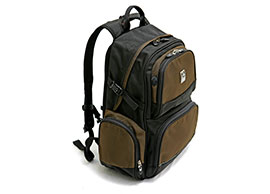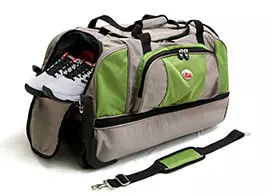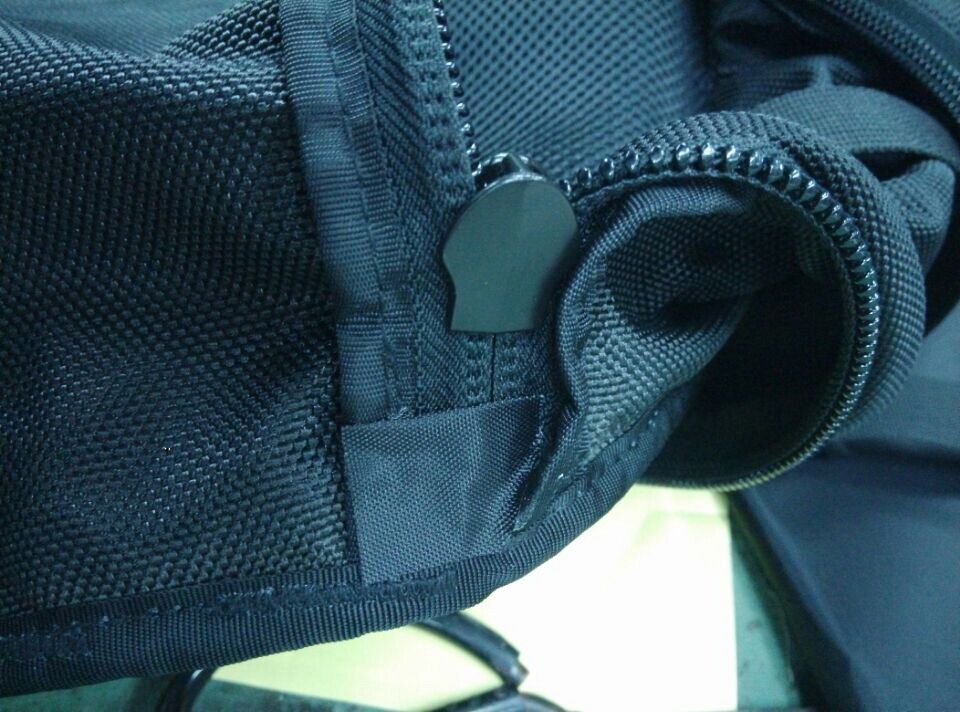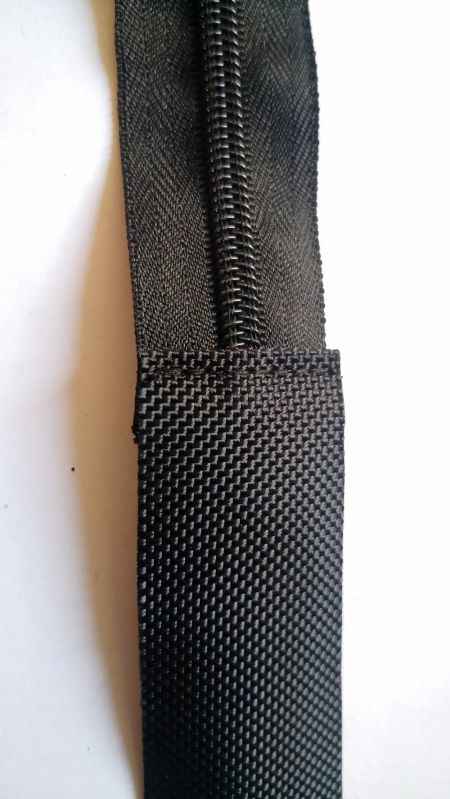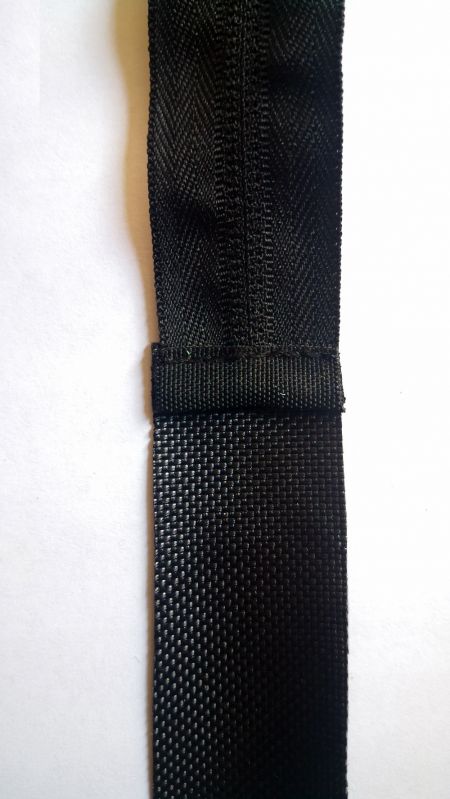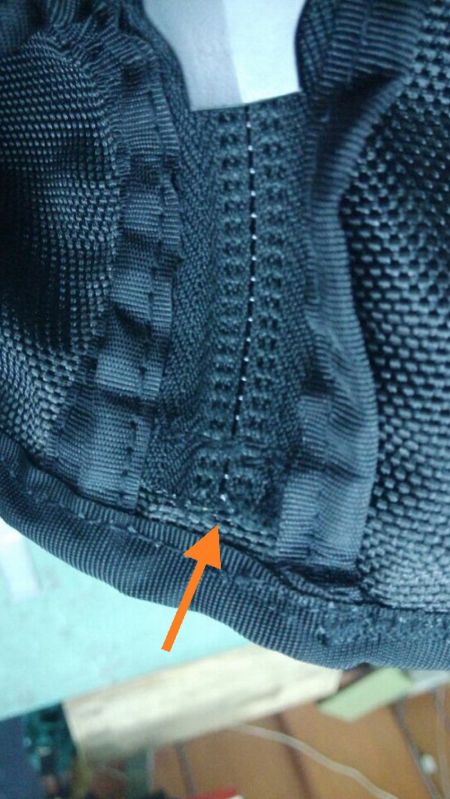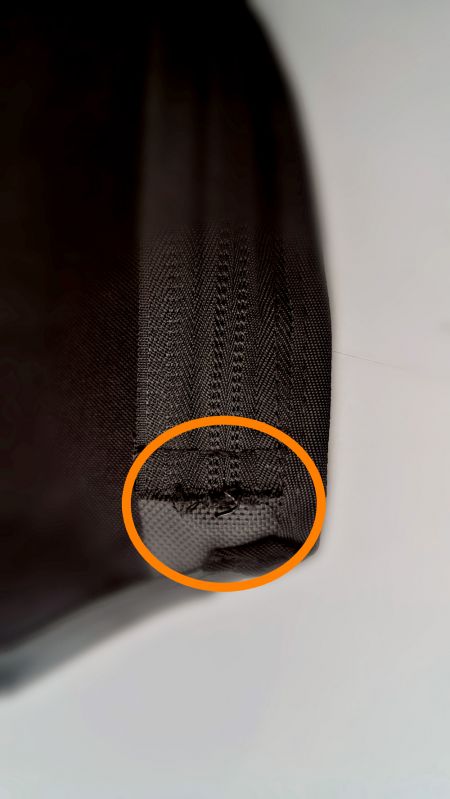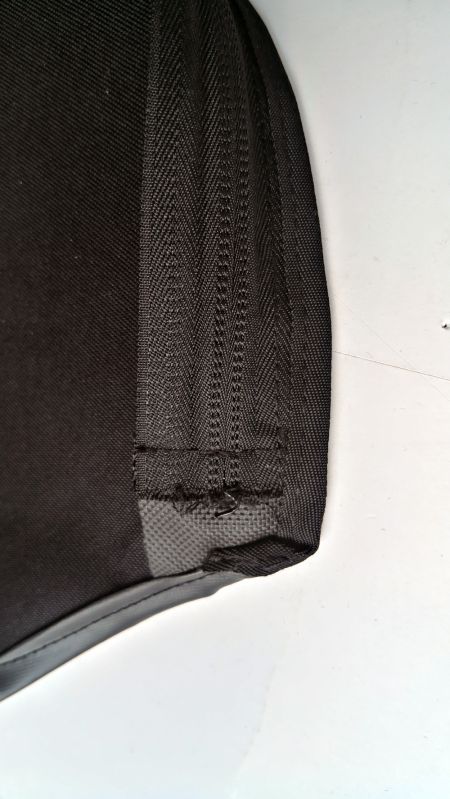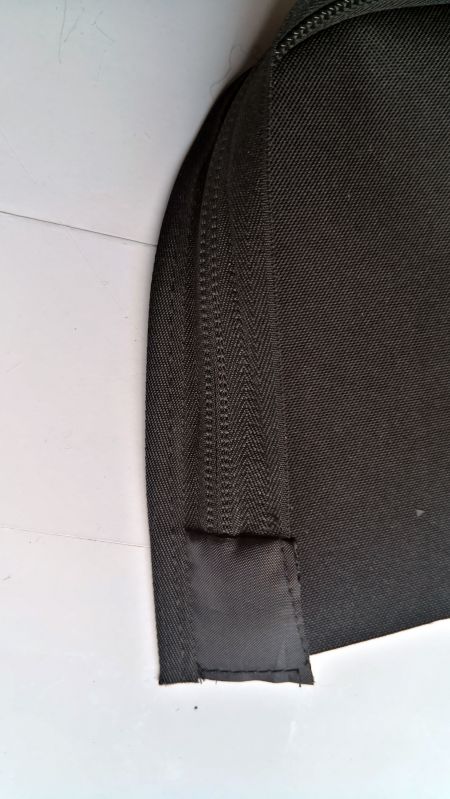Solution for prickly Zipper Elements
bag Zipper Elements solutions from DELLY
Generally speaking, backpacks tend to use larger nylon zipper sizes because they are subject to more stress; however, the manufacturing process of large zippers is often flawed. Since smaller sized nylon zippers (#5 or less) are cleanly cut so will not stick out and prick end users’ hands, the ends are often left exposed or wrapped with a binding layer. However with nylon zippers larger than #5 (commonly used in backpacks), the nylon elements are thicker and harder to cut cleanly. In addition, wrapped ends become too thick and hard to stitch, leading to sewing needles breaking. Most factories leave zipper ends exposed regardless of zipper size, causing poorly cut ends to prick end users’ hands.
Here at DELLY, we approach nylon zippers larger than size 5 differently compared to other manufacturers. We add a cover to the nylon zipper end to protect the end users’hand and increase the durability of the zipper. By using a cover instead of a binding layer, we also avoid needles breaking, thus reducing production time.
- Nylon Zipper End Stitching Outside View
- Nylon Zipper End Stitching Inside View
- #10 Nylon Zipper End Left Exposed
- Uncleanly Cut Nylon Zipper End
- Uncleanly Cut Nylon Zipper End Zoomed
- Nylon Zipper End with Cover

